#recycling vehicles
Text
Trusted Car Scrap Dealers for Responsible Vehicle Disposal
Introduction: In an era where sustainability and environmental consciousness are of utmost importance, Maruti Suzuki India Ltd and Toyota Tsusho have emerged as leading automotive companies committed to responsible vehicle disposal. As a result, they have established car scrap programs that prioritize eco-friendly practices and adhere to stringent regulations. This blog aims to shed light on the collaboration between Maruti Suzuki India Ltd and Toyota Tsusho as trusted car scrap dealers, highlighting the benefits of choosing their services for your vehicle disposal needs.
Commitment to Environmental Sustainability: Maruti Suzuki India Ltd and Toyota Tsusho recognize the pressing need to reduce carbon emissions and the environmental impact of end-of-life vehicles. As responsible corporate citizens, they have implemented car scrap programs that aim to minimize waste, promote recycling, and reduce pollution. By choosing these car scrap dealers, you contribute to the collective efforts in achieving a greener and cleaner future.
Compliance with Government Regulations: Both Maruti Suzuki India Ltd and Toyota Tsusho prioritize compliance with government regulations governing vehicle scrapping. These car scrap dealers operate under the purview of regional transport authorities and hold necessary licenses and certifications. By availing their services, you can be assured that your vehicle disposal follows the legal framework, ensuring a hassle-free and legitimate process.
Safe and Environmentally Friendly Practices: Maruti Suzuki India Ltd and Toyota Tsusho employ industry best practices to ensure safe and environmentally friendly vehicle scrapping. They have established state-of-the-art facilities equipped with advanced machinery and trained professionals who follow stringent protocols. From fluid draining and parts salvaging to metal recycling and waste management, these car scrap dealers prioritize sustainable practices at every step of the scrapping process.
Optimal Value Recovery: When you choose Maruti Suzuki India Ltd and Toyota Tsusho as your car scrap dealers, you benefit from their expertise in maximizing value recovery from your end-of-life vehicle. Through efficient dismantling, salvaging of reusable parts, and responsible recycling, they ensure that the materials and components with residual value are appropriately utilized. This approach not only benefits the environment but also provides economic benefits by extracting value from your scrapped vehicle.
Streamlined Customer Experience: Maruti Suzuki India Ltd and Toyota Tsusho prioritize customer satisfaction and aim to provide a seamless experience throughout the vehicle scrapping process. Their customer-centric approach ensures that you receive prompt assistance, transparent communication, and professional guidance at every stage. From documentation and deregistration to the transfer of ownership, these car scrap dealers streamline the administrative tasks, making the process convenient and hassle-free for you.
Conclusion: Choosing Maruti Suzuki India Ltd and Toyota Tsusho as your car scrap dealers means making an informed decision for responsible vehicle disposal. Their commitment to environmental sustainability, compliance with government regulations, safe practices, optimal value recovery, and customer-centric approach set them apart as trusted partners in the realm of scrap vehicle. By availing their services, you contribute to the global efforts towards a greener future while ensuring a smooth and reliable process. Embrace the opportunity to make a positive impact on the environment by entrusting your end-of-life vehicle to these reputable car scrap dealers.
0 notes
Text

[Image description: A series of posts from Jason Lefkowitz @[email protected] dated Dec 08, 2022, 04:33, reading:
It's good that our finest minds have focused on automating writing and making art, two things human beings do simply because it brings them joy.
Meanwhile tens of thousands of people risk their lives every day breaking down ships, a task that nobody is in a particular hurry to automate because those lives are considered cheap https://www.dw.com/en/shipbreaking-recycling-a-ship-is-always-dangerous/a-18155491
(Headline: 'Recycling a ship is always dangerous.' on Deutsche Welle)
A world where computers write and make art while human beings break their backs cleaning up toxic messes is the exact opposite of the world I thought I was signing up for when I got into programming
/end image description]
#artificial intelligence#computers#programming#technology#Jason Lefkowitz#Mastodon#labor#transcription#capitalism#corporations#exploitation#class struggle#creativity#humans#safety#survival#vehicles#recycling#generative images#machine learning
29K notes
·
View notes
Text
Good News - July 22-28
Like these weekly compilations? Tip me at $kaybarr1735 or check out my new(ly repurposed) Patreon!
1. Four new cheetah cubs born in Saudi Arabia after 40 years of extinction

“[T]he discovery of mummified cheetahs in caves […] which ranged in age from 4,000 to as recent as 120 years, proved that the animals […] once called [Saudi Arabia] home. The realisation kick-started the country’s Cheetah Conservation Program to bring back the cats to their historic Arabian range. […] Dr Mohammed Qurban, CEO of the NCW, said: […] “This motivates us to continue our efforts to restore and reintroduce cheetahs, guided by an integrated strategy designed in accordance with best international practices.””
2. In sub-Saharan Africa, ‘forgotten’ foods could boost climate resilience, nutrition

“[A study published in PNAS] examined “forgotten” crops that may help make sub-Saharan food systems more resilient, and more nutritious, as climate change makes it harder to grow [current staple crops.] [… The study identified 138 indigenous] food crops that were “relatively underresearched, underutilized, or underpromoted in an African context,” but which have the nutrient content and growing stability to support healthy diets and local economies in the region. […] In Eswatini, van Zonneveld and the World Vegetable Center are working with schools to introduce hardy, underutilized vegetables to their gardens, which have typically only grown beans and maize.”
3. Here's how $4 billion in government money is being spent to reduce climate pollution

“[New Orleans was awarded] nearly $50 million to help pay for installing solar on low to middle income homes [… and] plans to green up underserved areas with trees and build out its lackluster bike lane system to provide an alternative to cars. […] In Utah, $75 million will fund several measures from expanding electric vehicles to reducing methane emissions from oil and gas production. [… A] coalition of states led by North Carolina will look to store carbon in lands used for agriculture as well as natural places like wetlands, with more than $400 million. [… This funding is] “providing investments in communities, new jobs, cost savings for everyday Americans, improved air quality, … better health outcomes.””
4. From doom scrolling to hope scrolling: this week’s big Democratic vibe shift

“[Democrats] have been on an emotional rollercoaster for the past few weeks: from grim determination as Biden fought to hang on to his push for a second term, to outright exuberance after he stepped aside and Harris launched her campaign. […] In less than a week, the Harris campaign raised record-breaking sums and signed up more than 100,000 new volunteers[….] This honeymoon phase will end, said Democratic strategist Guy Cecil, warning the election will be a close race, despite this newfound exuberance in his party. [… But v]oters are saying they are excited to vote for Harris and not just against Trump. That’s new.”
5. Biodegradable luminescent polymers show promise for reducing electronic waste

“[A team of scientists discovered that a certain] chemical enables the recycling of [luminescent polymers] while maintaining high light-emitting functions. […] At the end of life, this new polymer can be degraded under either mild acidic conditions (near the pH of stomach acid) or relatively low heat treatment (> 410 F). The resulting materials can be isolated and remade into new materials for future applications. […] The researchers predict this new polymer can be applied to existing technologies, such as displays and medical imaging, and enable new applications […] such as cell phones and computer screens with continued testing.”
6. World’s Biggest Dam Removal Project to Open 420 Miles of Salmon Habitat this Fall

“Reconnecting the river will help salmon and steelhead populations survive a warming climate and [natural disasters….] In the long term, dam removal will significantly improve water quality in the Klamath. “Algae problems in the reservoirs behind the dams were so bad that the water was dangerous for contact […] and not drinkable,” says Fluvial Geomorphologist Brian Cluer. [… The project] will begin to reverse decades of habitat degradation, allow threatened salmon species to be resilient in the face of climate change, and restore tribal connections to their traditional food source.”
7. Biden-Harris Administration Awards $45.1 Million to Expand Mental Health and Substance Use Services Across the Lifespan
““Be it fostering wellness in young people, caring for the unhoused, facilitating treatment and more, this funding directly supports the needs of our neighbors,” said HHS Secretary Xavier Becerra. [The funding also supports] recovery and reentry services to adults in the criminal justice system who have a substance use disorder[… and clinics which] serve anyone who asks for help for mental health or substance use, regardless of their ability to pay.”
8. The World’s Rarest Crow Will Soon Fly Free on Maui

“[… In] the latest attempt to establish a wild crow population, biologists will investigate if this species can thrive on Maui, an island where it may have never lived before. Translocations outside of a species’ known historical range are rare in conservation work, but for a bird on the brink of extinction, it’s a necessary experiment: Scientists believe the crows will be safer from predators in a new locale—a main reason that past reintroduction attempts failed. […] As the release date approaches, the crows have already undergone extensive preparation for life in the wild. […] “We try to give them the respect that you would give if you were caring for someone’s elder.””
9. An optimist’s guide to the EV battery mining challenge
““Battery minerals have a tremendous benefit over oil, and that’s that you can reuse them.” [… T]he report’s authors found there’s evidence to suggest that [improvements in technology] and recycling have already helped limit demand for battery minerals in spite of this rapid growth — and that further improvements can reduce it even more. [… They] envision a scenario in which new mining for battery materials can basically stop by 2050, as battery recycling meets demand. In this fully realized circular battery economy, the world must extract a total of 125 million tons of battery minerals — a sum that, while hefty, is actually 17 times smaller than the oil currently harvested every year to fuel road transport.”
10. Peekaboo! A baby tree kangaroo debuts at the Bronx Zoo

“The tiny Matschie’s tree kangaroo […] was the third of its kind born at the Bronx Zoo since 2008. [… A] Bronx Zoo spokesperson said that the kangaroo's birth was significant for the network of zoos that aims to preserve genetic diversity among endangered animals. "It's a small population and because of that births are not very common," said Jessica Moody, curator of primates and small mammals at the Bronx Zoo[, …] adding that baby tree kangaroos are “possibly one of the cutest animals to have ever lived. They look like stuffed animals, it's amazing.””
July 15-21 news here | (all credit for images and written material can be found at the source linked; I don’t claim credit for anything but curating.)
#hopepunk#good news#cheetah#extinct species#africa#nutrition#food#farming#gardening#pollution#climate#climate change#climate crisis#democrats#us politics#us elections#kamala harris#voting#recycling#biodegradable#technology#salmon#habitat#fish#mental illness#mental health#substance abuse#hawaii#electric vehicles#zoo
819 notes
·
View notes
Text




Honda Sustaina-C & Pocket Concept, 2024. Originally shown at last year's Japan Mobility Show, a new version of Honda's energy-efficient, low-carbon concept has been revealed. This time the bodywork is fabricated from recycled acrylic resin sourced from used taillights to create exterior panels that do not require painting. This material approach could reduce emissions during production by as much as 45%. The panels are crack resistant and able to return to their original shape following light collisions. It comes paired with the Pocket Concept, a compact electric motorcycle that can be stored in the luggage compartment and provide last mile mobility.
#Honda#Honda Sustaina-C#Honda Pocket#concept#prototype#experimental car#test vehicle#recycled#low energy#2024#design study#material technology
194 notes
·
View notes
Text
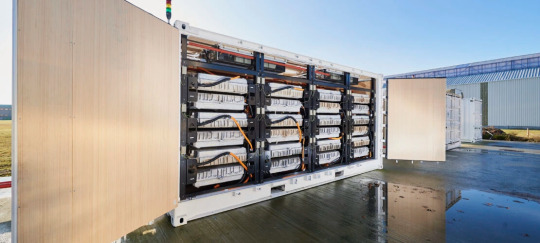
[In February, 2023], a small warehouse in the English city of Nottingham received the crucial final components for a project that leverages the power of used EV batteries to create a new kind of circular economy.
Inside, city authorities have installed 40 two-way electric vehicle chargers that are connected to solar panels and a pioneering battery energy storage system, which will together power a number of on-site facilities and a fleet of 200 municipal vehicles while simultaneously helping to decarbonize the UK’s electrical grid.
Each day Nottingham will send a combination of solar-generated energy — and whatever is left in the vehicles after the day’s use — from its storage devices into the national grid. The so-called “vehicle to grid” chargers deliver this energy just when it’s needed most, during peak evening demand, when people are home cooking, using hot water or watching TV. Later, the same chargers pull energy from the grid to recharge the vehicles in the wee hours of the night, when folks are sleeping and electricity is cheaper and plentiful.
“We are trying to create a virtual power station,” says Steve Cornes, Nottingham City Council’s Technical Lead. “The solar power and battery storage will help us operate independently and outside of peak times, making our system more resilient and reducing stress on the national grid. We could even make a profit.” ...
After around a decade, an EV battery no longer provides sufficient performance for car journeys. However, they still can retain up to 80 percent of their original capacity, and with this great remaining power comes great reusability.
“As the batteries degrade, they lose their usefulness for vehicles,” says Matthew Lumsden, chairman of Connected Energy. “But batteries can be used for so many other things, and to not do so results in waste and more mining of natural resources.”
The E-STOR hubs come in the form of 20-foot modular containers, each one packed with 24 repurposed EV batteries from Renault cars. Each hub can provide up to 300kW of power, enough to provide energy to dozens of homes. One study by Lancaster University, commissioned by Connected Energy, calculated that a second life battery system saved 450 tons of CO2 per MWh over its lifetime...
Battery repurposing and recycling is set to play a massive role over the coming years as the automobile industry attempts to decarbonize and the world more broadly attempts to fight waste. The production of EVs, which use lithium-ion batteries, is accelerating. Tesla, for example, is aiming to sell 20 million EVs per year by 2030 — more than 13 times the current level. In turn, 12 million tons of EV batteries could become available for reuse by 2030, according to one estimate.
“Over the next decade we are going to see this gigantic wave,” says Jessica Dunn, a senior analyst at the Union of Concerned Scientists. “Companies are recognizing this is a necessary industry. They need to ramp up infrastructure for recycling and reuse.”
-via Reasons to Be Cheerful, March 13, 2023
#ev#ev charger#electric vehicle#electric cars#batteries#battery recycling#lithium ion battery#auto industry#sustainability#circular economy#recycling#reuse#uk#nottingham#england#good news#hope
217 notes
·
View notes
Text

April 4th, 2024
10 notes
·
View notes
Text
Looking through the AutoZone website and getting teary eyed at the sheer amount of helpful and accessible information they have available to the public.
#like actually I've had to wipe my eyes a few times at how nice this website is#you can put in the information of your specific vehicle and get a variety of parts#how to videos documents and pther guides#you can take your vehicle to any autozone and they'll test your battery alternator or starter for FREE#if they fond that your battery needs charging they'll also do that for free#find*#they also recycle used motor oil that people bring in along with a ton or other stuff#omg get in the zone#anyway im gonna get back to figuring out how to fix my van
2 notes
·
View notes
Text

#Photography#Oct. 2018#Outdoors#Distance#Lost & Found#Objects#Dollhouse#Castle#Glitter#Steeple#Siding#Chipped Paint#Rust#Vehicles#Tires#Wheels#Decorative Pillows#White Rabbit#Bunnies#Snack Boxes#Recyclables#Litter#Telephone Poles#Brick Sidewalk#Curb#Clovers#Cracks#Roads#Nature#Pavement
2 notes
·
View notes
Text
i think the dnd character i played for a halloween oneshot a few weeks ago is one of my favorite characters ive made recently. and her name was fucking paige
#she was a normal college student (nursing major) who set out with her friends to solve a disappearance#and i basically had one rule that defined her character: protect the group#like best-case scenario was everyone made it out. but if someone had to die there then shed do her best to make sure it wasnt any of them#and she died alone (yet not alone) after sacrificing herself so her friends could get free#she nearly made it out. she was so close. she couldve gone home#except she couldn't because she had some corruption inside her (goopy fungus shit) so the villain could track her wherever she went#(and she was already doomed as soon as it got inside her anyways)#so she jumped out of the moving vehicle and did her best to hold the bad guy off until he lost track of the rest of the group#and then eventually she died. succumbed to the evil fungus hivemind infection#but she was okay with it. because her friends were free and that was what mattered most#god she was so cool. im definitely recycling her
3 notes
·
View notes
Text
Vehicle Recycling Market Share, Sales Channels and Overview Till 2030
TheVehicle Recycling Market was valued at USD 86.8 billion in 2023-e and will surpass USD 159.5 billion by 2030; growing at a CAGR of 9.1% during 2024 - 2030. As the automotive industry continues to grow, so does the number of vehicles that reach the end of their life cycle. This has given rise to a burgeoning market: vehicle recycling. The vehicle recycling market not only addresses the issue of waste management but also plays a significant role in conserving resources and reducing environmental impact. In this blog, we will explore the dynamics, benefits, and future prospects of the vehicle recycling market.
Understanding Vehicle Recycling
Vehicle recycling involves dismantling end-of-life vehicles (ELVs) to recover valuable parts and materials. This process includes the removal of reusable components, the extraction of recyclable materials such as metals, and the proper disposal of hazardous substances. The goal is to maximize the reuse of vehicle parts and minimize waste, contributing to a circular economy.
Get a Sample Report: https://bit.ly/3LNEtIo
Market Dynamics
Growth Drivers
Environmental Regulations: Stringent environmental regulations and policies are driving the growth of the vehicle recycling market. Governments worldwide are implementing laws to ensure proper disposal and recycling of ELVs to reduce environmental pollution.
Resource Conservation: Recycling vehicles conserves natural resources by reducing the need for raw materials. Metals like steel, aluminum, and copper, which are extensively used in vehicle manufacturing, can be recovered and reused, decreasing the demand for mining and extraction.
Economic Benefits: The vehicle recycling industry generates significant economic value. Recycled materials are often cheaper than virgin materials, reducing production costs for manufacturers. Additionally, the sale of reusable parts provides revenue streams for recycling businesses.
Challenges
Complexity of Recycling Process: Vehicles are composed of numerous materials, including metals, plastics, glass, and rubber, making the recycling process complex. Efficiently separating and processing these materials requires advanced technology and expertise.
Market Fragmentation: The vehicle recycling market is fragmented, with numerous small and medium-sized enterprises (SMEs) operating alongside larger players. This fragmentation can lead to inconsistent standards and practices across the industry.
Technological Advancements: Keeping up with technological advancements in vehicle design and materials can be challenging for recyclers. Newer vehicles often incorporate advanced materials and technologies that require specialized recycling processes.
Benefits of Vehicle Recycling
Environmental Impact
Vehicle recycling significantly reduces environmental pollution. By recycling metals and other materials, the industry lowers greenhouse gas emissions associated with mining and manufacturing. Additionally, proper disposal of hazardous substances like batteries and fluids prevents soil and water contamination.
Resource Efficiency
Recycling vehicles promotes resource efficiency by recovering valuable materials that can be used in new production. This reduces the strain on natural resources and decreases the energy consumption and environmental impact of extracting and processing raw materials.
Economic Opportunities
The vehicle recycling market creates numerous economic opportunities. Recycling businesses generate revenue from the sale of recycled materials and reusable parts. Moreover, the industry provides employment opportunities, contributing to local economies.
Future Prospects
The future of the vehicle recycling market looks promising, driven by technological advancements and increasing environmental awareness. Here are some key trends shaping the future:
Technological Innovations
Innovations in recycling technology are enhancing the efficiency and effectiveness of vehicle recycling. Advanced sorting and separation technologies, robotics, and artificial intelligence (AI) are improving the accuracy and speed of the recycling process. These advancements are expected to drive further growth in the market.
Circular Economy
The shift towards a circular economy is gaining momentum. Manufacturers are increasingly designing vehicles with recyclability in mind, using materials that can be easily recovered and reused. This approach not only supports sustainability but also aligns with consumer preferences for environmentally friendly products.
Get an insights of Customization: https://bit.ly/3LNv7vY
Collaboration and Standardization
Collaboration between stakeholders, including manufacturers, recyclers, and policymakers, is crucial for the growth of the vehicle recycling market. Standardizing recycling practices and implementing uniform regulations can ensure consistent quality and efficiency across the industry.
Conclusion
The vehicle recycling market is a vital component of the global push towards sustainability. By addressing the challenges and leveraging technological advancements, the industry can continue to thrive and contribute to environmental conservation, resource efficiency, and economic growth. As consumers and businesses alike recognize the importance of responsible vehicle disposal, the future of vehicle recycling looks bright, paving the way for a more sustainable and eco-friendly automotive industry.
0 notes
Text
The Rise of Vehicle Recycling Industry: Benefits and Players Involved
The Importance of Recycling Vehicles
In today's world, where everything is fast-paced and rapidly evolving, keeping up with the latest trends and technologies is essential. One such trend that is gaining momentum in the automobile industry is recycling vehicles. This has also led to the rise of the recycling vehicles industry. Scrap car buyers, in Delhi and car scrap dealers in Delhi are all playing their part in the recycling process of vehicles. This article will throw light on how the recycling of vehicles is not only good for the environment but also a profitable business for those involved in it.
The Role of Scrap Car Buyers
Scrap car buyers are individuals or companies that specialize in buying scrap vehicles. These vehicles may be old, damaged, or no longer in use, but they still contain valuable parts and materials that can be recycled. These scrap car buyers play a crucial role in recycling by purchasing and dismantling these vehicles, extracting valuable parts and materials, and sending them for recycling. With the increasing industry requirements, their role is gaining significance steadily.
These dealers have the expertise and knowledge to identify which scrap vehicle parts can be reused or sold and which parts need to be recycled. By doing so, they not only help reduce the amount of waste generated by old and damaged cars but also contribute to the recycling of vehicles.
Car scrap dealers in Delhi are another essential part of the vehicle recycling process. They specialize in buying scrap vehicles from individuals or companies and then either dismantle them for parts or sell them to scrap yards. These dealers help reduce the amount of waste generated by old and damaged cars and contribute to the recycling of vehicles.
The Recycling Process
The process of recycling vehicles involves several steps. The first step is to collect the scrap vehicles from their owners. The scrap car buyers, and car scrap dealers in Delhi all play their part in this step. Once the vehicles are collected, they are transported to a recycling facility.
The scrap vehicles are dismantled at the recycling facility, and the valuable parts and materials are extracted. These parts and materials are then sent for recycling, where they are used to make new products. The parts that cannot be reused or recycled are disposed of in an environmentally friendly manner. It is a relatively new concept, but considering the environment's needs, it is gaining prominence too.
Benefits of Recycling Vehicles
Recycling vehicles have many benefits. Firstly, it reduces the amount of waste generated by old and damaged cars. This waste can harm the environment, as it may contain hazardous materials such as oil, coolant, and batteries. Recycling vehicles helps in reducing the amount of waste that goes to landfills and also helps in reducing the need for new raw materials.
Secondly, recycling vehicles helps in conserving natural resources. Many materials used in vehicles, such as steel, aluminum, and rubber, are non-renewable resources. By recycling these materials, we reduce the need for new raw materials, which helps conserve natural resources.
Other than these factors, recycling vehicles can be a profitable business for those involved in it. Scrap car buyers in Delhi, and car scrap dealers in Delhi can profit by buying and selling scrap vehicles. The valuable parts and materials extracted from these vehicles can be sold for a profit, and the remaining parts can be sold to scrap yards for recycling.
Conclusion
Recycling vehicles is a trend that is gaining momentum in the automobile industry. Scrap car buyers, and car scrap dealers in Delhi all play their part in the recycling process of vehicles.
The process of recycling vehicles involves collecting the scrap vehicles, dismantling them, extracting the valuable parts and materials, and sending them for recycling. Recycling vehicles has many benefits, including reducing the waste generated by old and damaged cars, conserving natural resources, and being a profitable business for those involved.
0 notes
Text
Green Technology and Sustainability: Paving the Way for a Greener Future
As our planet faces increasing environmental challenges, green technology emerges as a beacon of hope. Green technology, or clean technology, refers to innovations designed to reduce our environmental impact, promote sustainability, and foster a healthier planet. Let’s delve into how green technology is shaping our future and why it’s crucial for achieving long-term sustainability.
Understanding…
#carbon footprint#circular economy#clean technology#climate change#composting#eco-friendly building#electric vehicles#energy efficiency#Environmental Impact#green construction#green innovation#green technology#Recycling#renewable energy#solar power#Sustainability#Sustainable Practices#Sustainable transportation#waste management#wind turbines
0 notes
Photo
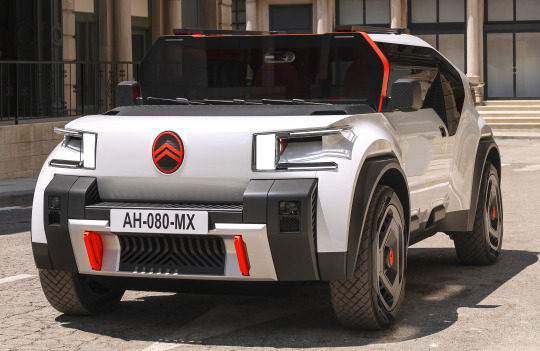
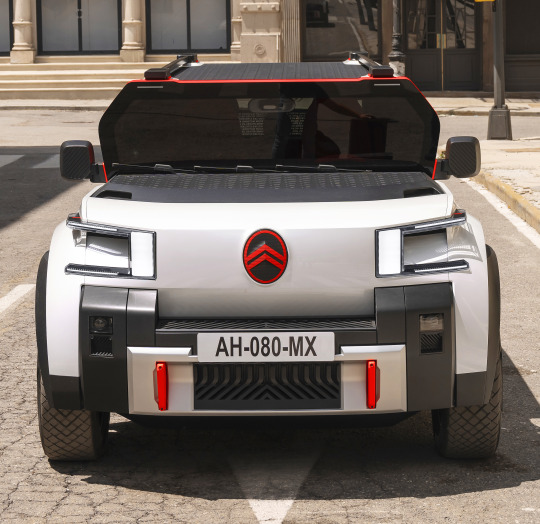
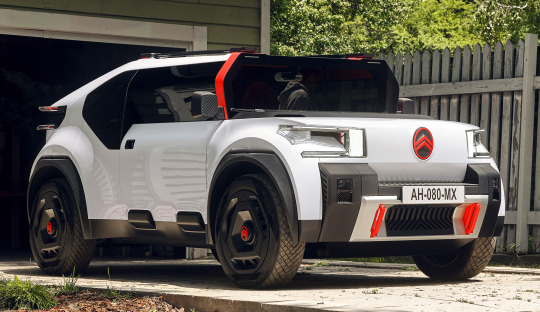

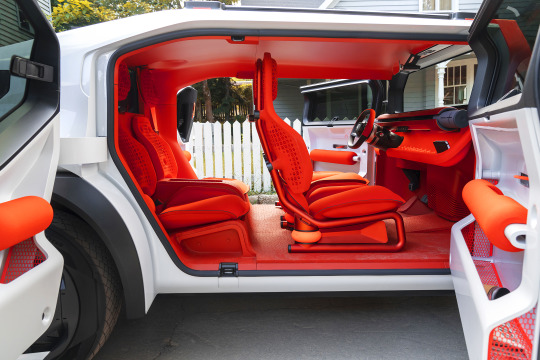
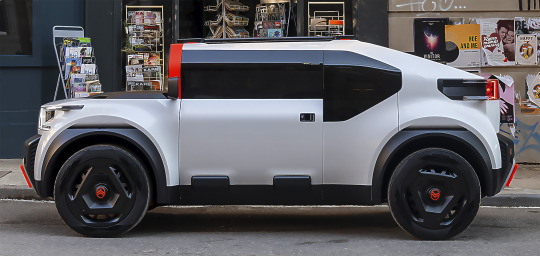
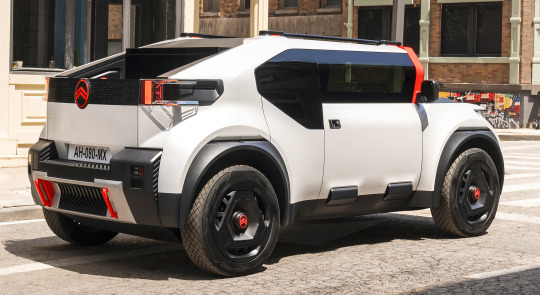
Citroën Oli Concept, 2022. A prototype for a compact electric utility vehicle that is made from recycled and recyclable materials. The concept is the first Citroën to use the company’s new logo and is described by them as a “laboratory on wheels”
#Citroën#Citroën Oli#concept#test vehicle#recycled#electric vehicle#EV#utility vehicle#electric utility vehicle#2022#design study#prototype#new logo
236 notes
·
View notes
Text
Battery News: Lithium-Ion Recycling and Solid-State EV Breakthroughs
0 notes
Text
Global Battery Market: Projected Development During 2024-2032
The global battery market is anticipated to grow at a compound annual growth rate of 15.79% from the forecast period of 2024 to 2032. Read our Press Release
According to Triton’s research report, the Global Battery Market report is sectioned by Battery Type (Secondary Battery, Primary Battery), Technology (Lead-Acid, Lithium-Ion, Nickel-Cadmium, Nickel Metal Hydride, Nickel-Zinc (NiZn), Flow, Sodium-Sulfur (NaS), Zinc-Manganese Dioxide, Small Sealed Lead-Acid, Other Technologies), End-Use (Automotive Batteries, Industrial Batteries, Portable Batteries, Power Tools Batteries, SLI Batteries, Other End-Uses), and Regional (North America, Europe, Asia-Pacific, Latin America, Middle East and Africa)
The report highlights the Market Summary, Industry Outlook, Impact Analysis, Porter’s Five Forces Analysis, Market Attractiveness Index, Regulatory Framework, Key Buying Impact Analysis, Supply Chain Analysis, Key Market Strategies, Market Drivers, Challenge, Opportunities, Analyst Perspective, Competitive Landscape, Research Methodology, and Scope. It also provides Global Market Size Forecasts & Analysis (2024-2032).
According to Triton Market Research, the global battery market is anticipated to grow at a compound annual growth rate of 15.79% from 2024 to 2032.

A battery is a device that converts stored chemical energy into electrical energy as needed. It comprises electrochemical cells, each containing electrodes and an electrolyte. Batteries are crucial in various sectors, including consumer electronics, automotive, energy storage, and industrial applications.
Several factors are creating lucrative opportunities for the battery market globally, including a growing focus on second-life battery applications, demand for larger battery packs, and development in battery technologies. As electric vehicle batteries approach the end of their primary lifespan, there is a growing effort to explore their potential for second-life applications. These batteries could be repurposed for less demanding uses, such as backup power or grid balancing services. Additionally, ongoing research aims to refine the repurposing process and extend the batteries’ overall longevity.
However, the battery market’s expansion is limited owing to issues pertaining to battery recycling, raw material cost fluctuations, and safety concerns.
The Asia-Pacific is set to become the fastest-growing region in the battery market. In both advanced and emerging economies across the region, the adoption of electric vehicles is steadily gaining momentum. China stands out as a global leader in electric vehicle sales, while countries like India are actively upgrading their public transportation networks to accommodate electric vehicles. This rising demand for electric vehicles serves as a primary catalyst driving the growth of the battery market in the region.
The major companies in the battery market consist of Johnson Controls Inc, GS Yuasa International Ltd, Samsung SDI Co Ltd, Exide Technologies, Panasonic Corporation, Enersys, BYD Company Limited, A123 Systems LLC, Saft Groupe SA, and C&D Technologies Inc.
The threat of new entrants in the global battery market is assessed as low. While demand for batteries is robust, the barriers to entry are considerable. New players face significant initial costs, compliance with environmental regulations, and adherence to government policies. Establishing a manufacturing facility entails substantial upfront and ongoing expenses, posing a challenge to newcomers. Moreover, establishing a brand presence in a highly competitive market and matching the quality and product range of established firms is daunting. As a result, the overall threat posed by new entrants in the global market is expected to remain subdued throughout the forecast period.
#Battery Market#Energy#Power#battery technologies#battery recycling#demand for electric vehicles#triton market research#market research reports
0 notes